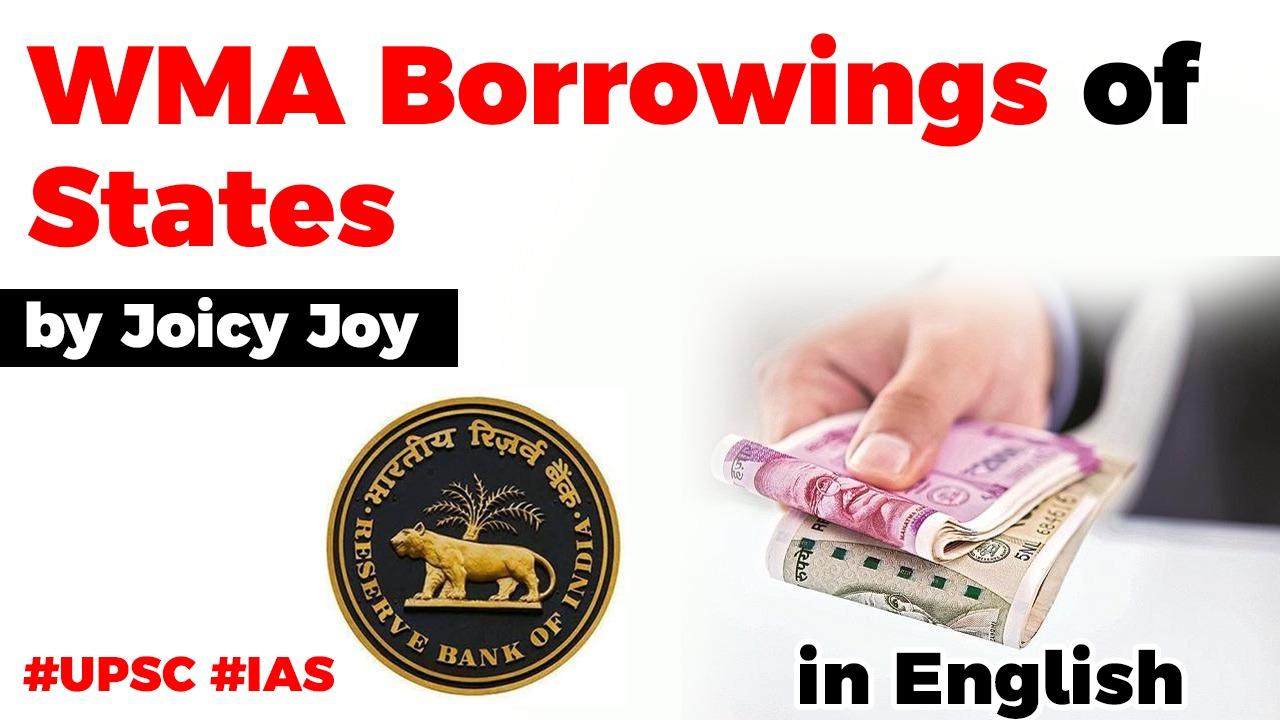Table of Contents
- Recently, states like Kerala, Punjab and Bihar have said that the Reserve Bank of India’s (RBI) decision to allow 60% higher borrowing under Ways and Means Advances (WMA) compared March 30, 2020 limit, is inadequate given the mounting expenses of states to counter the Covid-19 pandemic.
- The states welcomed the RBI move to allow 60% higher borrowing under Ways and Means Advances (WMA), but said it is a temporary relief and will have only a marginal impact upon the fiscal crisis the states are facing.
- They demanded from the Central government to raise the fiscal borrowing limits of states currently capped at 3% of the GSDP (Gross State Domestic Product) under the Fiscal Responsibility and Budget Management (FRBM) Act.
Ways and Means Advances (WMA)
- The WMA are short-term loan facilities which allow the Centre and states to borrow funds from the RBI to bridge their temporary mismatch between expenditure and receipts.
- The interest rate on WMA is the RBI’s repo rate.
- Repo rate is basically the rate at which RBI lends short-term money to banks.
- The WMA loans have a three-month tenure.
- States are allowed an overdraft facility (to borrow in excess of WMA limit) of 21 days.
Fiscal Responsibility and Budget Management (FRBM) Act, 2003
- To institutionalize fiscal discipline, reduce fiscal deficit, and improve macroeconomic management.
- The government was supposed to wipe out revenue deficit and cut fiscal deficit to 3% of GDP by 2008-09, thus bringing much needed fiscal discipline.
- Fiscal deficit is the total expenditure excluding revenue receipts, loan recoveries and receipts from disinvestment etc.
- It is a measure of the government borrowing in a year.
- The Act applies only to the central government and the States have to enact suitable legislation to adopt the rules under the FRBM Act.
- The implementation of the Act was put on hold in 2007-08 due to the global financial crisis and the need for fiscal stimulus.
- In 2012, the FRBM Act was amended and it was decided that the FRBM Act would target an effective revenue deficit in place of revenue deficit.
- Effective revenue deficit excludes capital expenditure from revenue deficit and thus provides space to the government to spend on formation of capital assets.
- In 2017, the FRBM Review Committee headed by former Revenue Secretary, NK Singh submitted its report to the Central Government.
- Important recommendations :
- A debt to GDP ratio of 60% should be targeted with a 40% limit for the centre and 20% limit for the states;
- Creation of an autonomous Fiscal Council;
- An “escape clause”, i.e. the government can deviate from the targets in case of a national calamity, national security, etc.
- The government used an escape route in its Budget for FY20, by taking a deviation of 0.5 percentage points from the fiscal deficit targets set out earlier.
- During the presentation of the Budget 2020-21, the government fixed the fiscal deficit target for the year 2020-21 at 3.5% of the GDP.
Latest Burning Issues | Free PDF






















 WhatsApp
WhatsApp